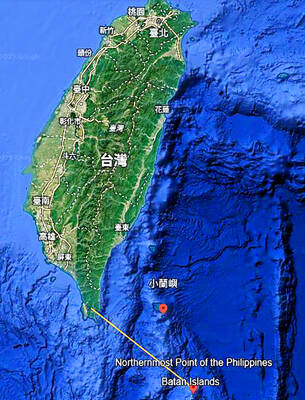Amid all the economic gloom, one business is still booming — India’s mobile phones — thanks to the world’s lowest call rates driven by fierce competition among cellular operators, experts said.
And while economists forecast a sharp slowdown in India’s economic growth, no downturn is seen in the mobile market, which added a record 15.4 million wireless users in January — the biggest monthly growth ever, the latest official data showed.
“India represents a unique mobile market where competition is the highest and the tariffs are the lowest,” said T.V. Ramachandran, head of the Cellular Operators Association of India.

PHOTO : AFP
And it’s not just affluent Indians who are buying phones in the world’s fastest growing cellular market — India outstripped China last April.
Most of the growth has been driven by laborers, maids, drivers and other lowly paid people in cities and increasingly in rural areas as innovative marketing has made phoning cheap enough for some of the poorest pockets.
“One of the biggest factors in this growth has been affordability both in terms of handset and tariff plans,” said Girish Trivedi, a senior analyst at consultancy Frost & Sullivan.
Customers can pay less than US$0.02 for a call and US$13 for a new mobile handset. Second-hand ones can cost far less.
For many, mobile phones mean their livelihood.
Sixty-two-year-old house painter Akshaye Jha runs his two-man business in New Delhi from his mobile phone.
“It means people can get in touch with me. I get more jobs,” Jha said.
“The mobile has become a device for the masses ... an agent of change,” transforming ways of communicating and doing business, Ramachandran said.
People are also buying phones even when they don’t need them for work.
Munshi, a security guard, never learned how to read numbers and gets other people to dial. He keeps his handset in his breast pocket and starts with surprise when it rings with a bouncy Hindi pop tune.
“It keeps me in touch with my family in the village,” he smiles after getting a call from a nephew.
In rural areas, meanwhile, people are snapping up phones at an ever quicker pace as mobile firms aggressively roll out networks, sharing costs of infrastructure to reach far-flung areas quickly and cheaply, experts said.
Farmers are using mobile phones to call other farmers to find out the market price for crops like rice, fruit and coconuts.
Market players say tumbling stock markets and property prices are not stopping many poor Indians signing up for phones as they don’t own shares or real estate and are not being hit.
“The people in rural India are not being affected by the global crunch,” Sanjay Gupta, chief marketing officer of Bharti Airtel, India’s leading cellular provider, said in an interview.
India’s “mobile revolution” is still mainly seen in the cities, but the real prize for phone companies is the vast rural market, where nearly 70 percent of the 1.1-billion-strong population live, analysts said.
By the end of January, 34.5 percent of the population owned a telephone, Telecom Regulatory Authority of India said.
But those figures distort the picture, with 66 percent of people in cities owning a phone compared to around 9 percent in rural areas, Frost & Sullivan said.
“The next addition of subscribers will come from rural regions,” Trivedi said.
The government calls the rural market the “next accelerator” for mobile growth.
Total wireless connections stand at 362.30 million, up from 233.63 million a year earlier. Combined with fixed line users, the country now has more than 400 million telephone connections.

SECURITY: As China is ‘reshaping’ Hong Kong’s population, Taiwan must raise the eligibility threshold for applications from Hong Kongers, Chiu Chui-cheng said When Hong Kong and Macau citizens apply for residency in Taiwan, it would be under a new category that includes a “national security observation period,” Mainland Affairs Council (MAC) Minister Chiu Chui-cheng (邱垂正) said yesterday. President William Lai (賴清德) on March 13 announced 17 strategies to counter China’s aggression toward Taiwan, including incorporating national security considerations into the review process for residency applications from Hong Kong and Macau citizens. The situation in Hong Kong is constantly changing, Chiu said to media yesterday on the sidelines of the Taipei Technology Run hosted by the Taipei Neihu Technology Park Development Association. With

CARROT AND STICK: While unrelenting in its military threats, China attracted nearly 40,000 Taiwanese to over 400 business events last year Nearly 40,000 Taiwanese last year joined industry events in China, such as conferences and trade fairs, supported by the Chinese government, a study showed yesterday, as Beijing ramps up a charm offensive toward Taipei alongside military pressure. China has long taken a carrot-and-stick approach to Taiwan, threatening it with the prospect of military action while reaching out to those it believes are amenable to Beijing’s point of view. Taiwanese security officials are wary of what they see as Beijing’s influence campaigns to sway public opinion after Taipei and Beijing gradually resumed travel links halted by the COVID-19 pandemic, but the scale of

A US Marine Corps regiment equipped with Naval Strike Missiles (NSM) is set to participate in the upcoming Balikatan 25 exercise in the Luzon Strait, marking the system’s first-ever deployment in the Philippines. US and Philippine officials have separately confirmed that the Navy Marine Expeditionary Ship Interdiction System (NMESIS) — the mobile launch platform for the Naval Strike Missile — would take part in the joint exercise. The missiles are being deployed to “a strategic first island chain chokepoint” in the waters between Taiwan proper and the Philippines, US-based Naval News reported. “The Luzon Strait and Bashi Channel represent a critical access

Pope Francis is be laid to rest on Saturday after lying in state for three days in St Peter’s Basilica, where the faithful are expected to flock to pay their respects to history’s first Latin American pontiff. The cardinals met yesterday in the Vatican’s synod hall to chart the next steps before a conclave begins to choose Francis’ successor, as condolences poured in from around the world. According to current norms, the conclave must begin between May 5 and 10. The cardinals set the funeral for Saturday at 10am in St Peter’s Square, to be celebrated by the dean of the College